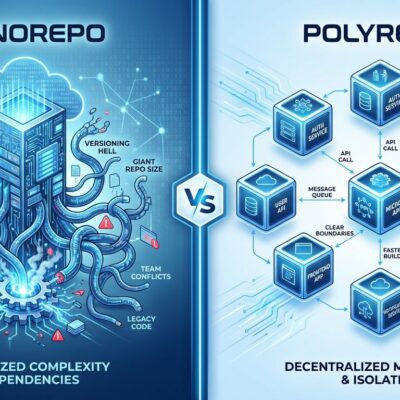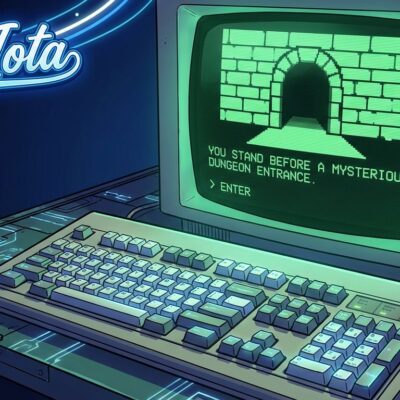
Your favorite apps run on code maintained by exhausted volunteers. The databases powering your company? Built by developers working double shifts—unpaid. Those JavaScript frameworks everyone depends on? Often shepherded by a single person drowning in demands. A new study reveals 73% of developers have experienced burnout, and 60% of open source maintainers are ready to walk away. When they do, they’re taking critical infrastructure with them.
The Economics Are Exploitation
Let’s be clear: 60% of OSS maintainers receive zero payment while maintaining infrastructure that powers billion-dollar businesses. This isn’t a “passion project” issue—it’s unpaid labor at industrial scale. The same Fortune 500 companies building products on free software somehow can’t find budget to pay the people keeping it alive.
These maintainers work full-time jobs, then spend nights and weekends fixing bugs for everyone else’s commercial products. The double shift destroys mental and physical health, steals time from family and friends, and creates crushing isolation. The justification? “You chose to make it open source.” That’s the same logic used to defend unpaid internships—exploitation dressed as opportunity.
Six Factors Driving the Burnout Spiral
Research from the University of Edinburgh identified six interconnected factors that trap maintainers in an inescapable cycle. Each one feeds into the others, creating a reinforcement loop that ends in walkaway.
No payment forces the full-time job plus OSS double shift. Crushing workload drowns solo maintainers in requests they can’t delegate—finding quality contributors is nearly impossible. Unrewarding maintenance traps developers doing repetitive work they hate instead of creative coding they love. Toxic behavior from users demanding features like paying customers while publicly shaming mistakes. Hyper-responsibility creates guilt over saying no or stepping back. And constant pressure to prove yourself through GitHub contribution graphs and portfolio metrics that never stop.
Here’s the vicious cycle: no pay means longer hours. Longer hours kill patience. Less patience breeds toxicity. Toxicity drives contributors away. Fewer contributors means more work falls on remaining maintainers. More work accelerates burnout. Burnout leads to walkaway. The system eats itself.
Real Consequences Everyone Ignores
Your dependencies are maintained by strangers who might quit tomorrow. When they do, your entire tech stack breaks. The leftpad incident proved this: one maintainer’s walkaway broke thousands of projects instantly. The Log4j vulnerability showed unpaid volunteers expected to drop everything for a global security emergency—zero compensation for saving the internet.
The core-js maintainer begged for funding while millions used his library. Companies building businesses on his unpaid work ignored him. Eventually, he walked away from active maintenance. Where was corporate concern then? It only appears after things break.
This creates massive supply chain risk. Security vulnerabilities go unpatched. Critical dependencies become unmaintained. Companies face emergency forks or rewrites. Innovation slows as the best developers quit entirely. Every company betting their infrastructure on exhausted volunteers’ goodwill is one bad day away from disaster.
Solutions That Won’t Work vs. Might Work
Shaming companies fails. Appeals to corporate goodwill get ignored. Donation models provide inconsistent income, not salary. The market won’t self-correct—it’s been 20+ years and things are getting worse, not better.
What might actually work? Tidelift offers companies subscriptions that pay maintainers of their dependencies with predictable income. Corporate open source offices at Google, Microsoft, and Meta pay employees to maintain critical projects and fund external maintainers. The EU’s Sovereign Tech Fund invested €85 million in digital infrastructure, though it’s too small for ecosystem needs. Some projects are moving to Fair Source licenses that force commercial users to pay, though this remains controversial.
Here’s the uncomfortable truth: companies must pay for OSS they profit from. Not as charity—as obligation. Percentage of revenue or headcount-based contributions. It won’t happen voluntarily because there’s no incentive to change when free labor works fine until it doesn’t.
What Developers Can Do Right Now
Audit your dependencies for maintainer health and bus factor. Push your company to establish an OSS office or subscribe to Tidelift. Support projects financially through GitHub Sponsors or Open Collective for tools you actually use. Treat maintainers like humans—write polite issues, recognize good work, don’t demand instant fixes. Contribute quality PRs that actually help instead of adding noise.
If your company’s product depends on open source (spoiler: it does), and you’re not contributing back financially, you’re part of the problem.
The Ticking Time Bomb
The open source sustainability crisis won’t fix itself. Either companies start paying for the infrastructure they rely on, or they’ll learn the hard way when critical dependencies disappear. The current model is exploitation—unpaid labor supporting billion-dollar businesses while maintainers burn out in record numbers.
The question isn’t whether the system is broken. It’s how bad things need to get before anyone with power does something about it. Until then, every company using OSS without contributing back is betting their entire tech stack on the goodwill of exhausted strangers. That’s not a sustainability model. It’s a ticking time bomb.












